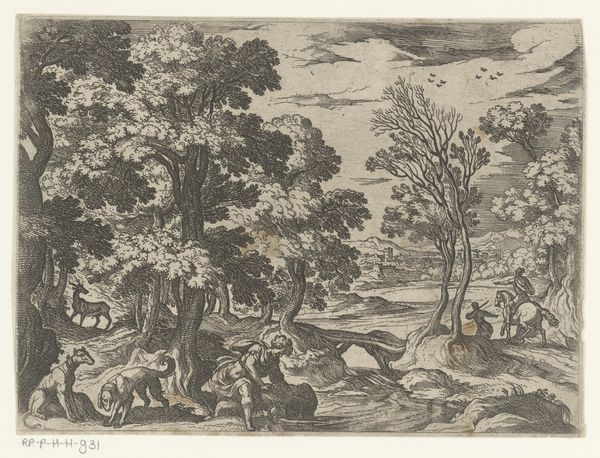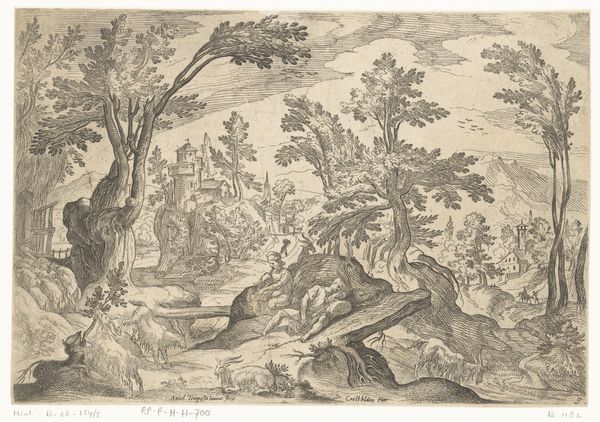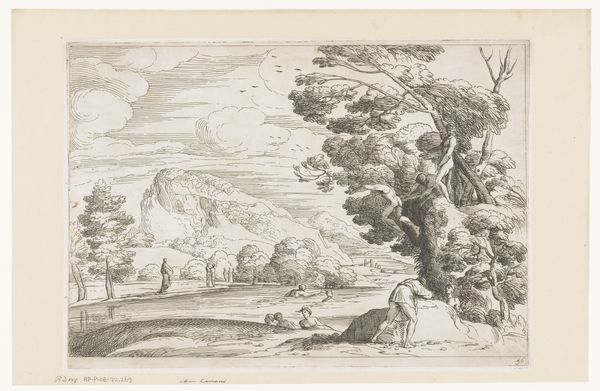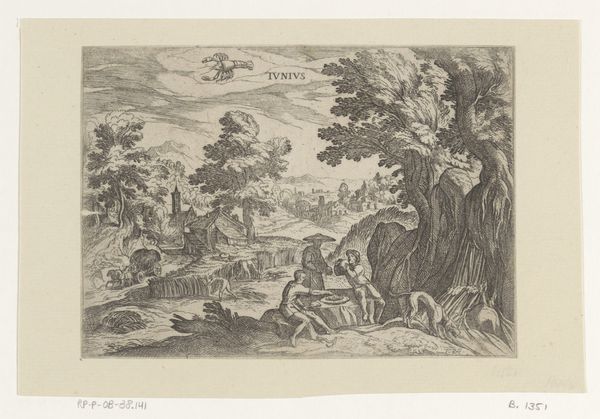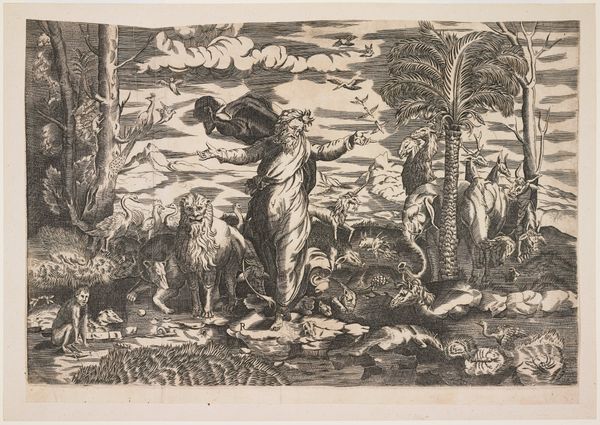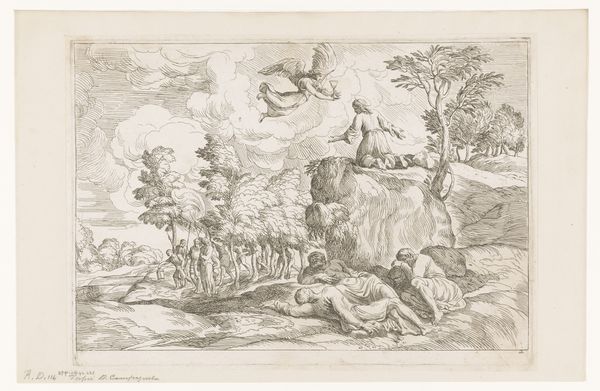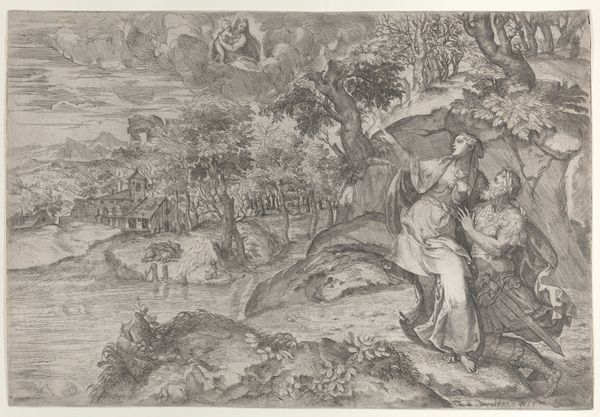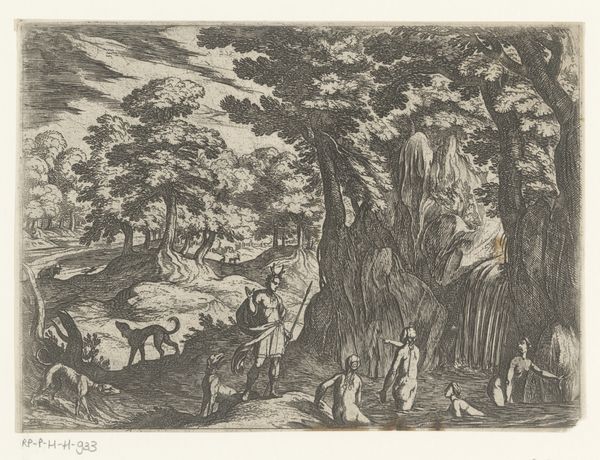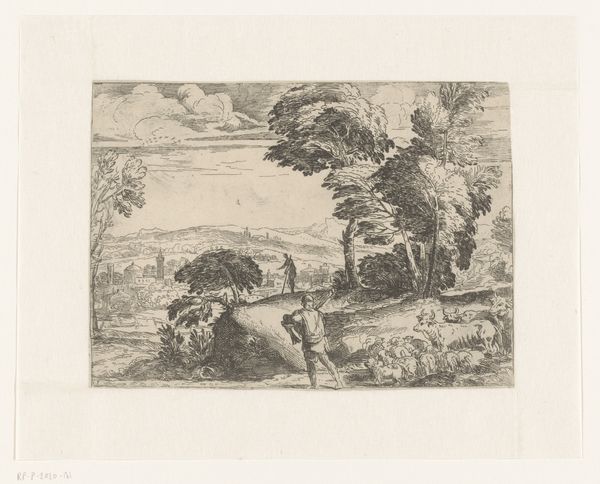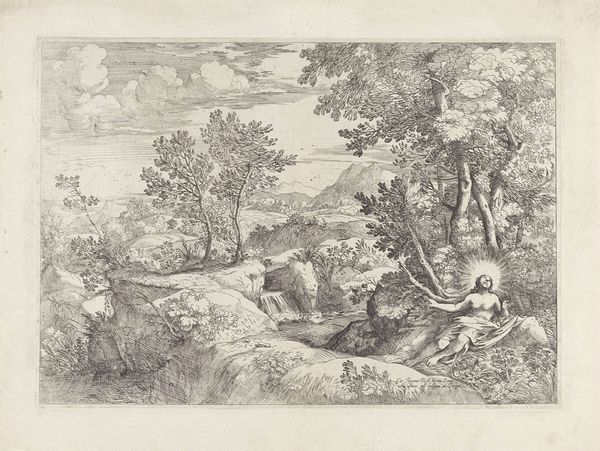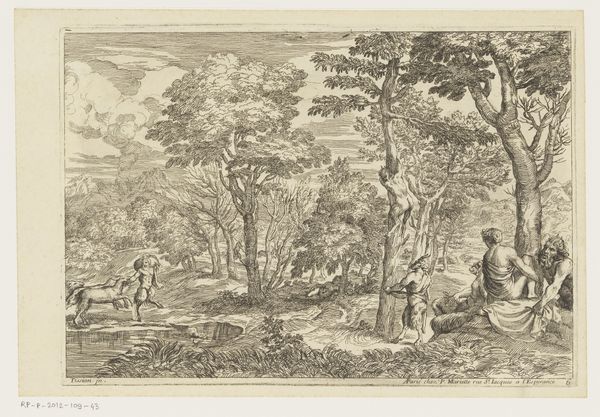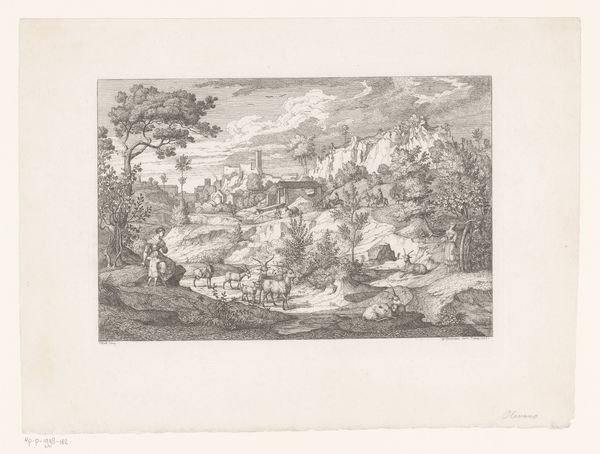
print, etching, intaglio, engraving
# print
#
etching
#
intaglio
#
landscape
#
mannerism
#
figuration
#
engraving
Dimensions: height 140 mm, width 194 mm
Copyright: Rijks Museum: Open Domain
Antonio Tempesta made this print, "Landschap met Pan en Syrinx," using etching, sometime between 1555 and 1630. The etching process involves covering a metal plate with a waxy, acid-resistant coating. The artist then scratches an image into this coating, exposing the metal. When the plate is submerged in acid, the exposed lines are eaten away, creating grooves. Ink is applied to the plate, filling these grooves, and then the surface is wiped clean. Finally, the plate is pressed onto paper, transferring the inked image. Tempesta’s skill is evident in the way he varies the depth and density of the etched lines to create tone and texture. Look closely and you’ll see how the density of etched lines creates shadows in the trees, the folds of fabric and Pan’s hairy legs, while lighter, finer lines suggest the distant landscape. Each line represents labor, a deliberate act of mark-making that brings the scene to life. By understanding this process, we gain a deeper appreciation for the work involved, and the way it shapes our experience of the image.
Comments
No comments
Be the first to comment and join the conversation on the ultimate creative platform.
